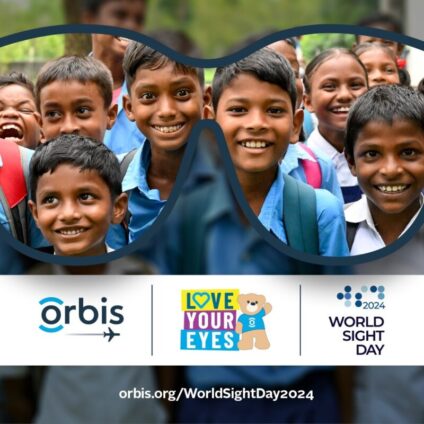Orbis International, a non-governmental organization, has revealed that refractive errors, particularly myopia (nearsightedness), are a leading cause of visual impairment and blindness in children.
In a press release issued to mark World Sight Day 2024, the organization highlighted that this condition affects approximately 448 million children and adolescents globally.
It added that the prevalence of myopia among the youth is rapidly increasing in various parts of the world, largely attributed to lifestyle changes.
“Refractive errors—vision problems where the shape of the eye prevents light from focusing correctly on the retina—are very common among children. Myopia, the most prevalent type of refractive error in children, causes distant objects to appear blurry. Treatments for myopia include corrective glasses, contact lenses, or surgery.”
While the report noted a decrease in the number of children blinded by eye conditions worldwide, this decline is primarily due to reduced cases of corneal blindness caused by vitamin A deficiency and measles.
The statement clarified, “However, this does not include refractive errors.”
The organization emphasized the importance of addressing squinted eyes (strabismus), which can lead to lazy eyes (amblyopia) if untreated.
“Squinted eyes can be treated before age 7. Without intervention, children may lose vision in the affected eye. No child is too young to wear spectacles; even babies can wear glasses following a thorough examination and prescription.”
To ensure the optimal eye health of children, Orbis International urged parents to adopt proactive measures, including:
Attend regular eye exams: Schedule comprehensive eye examinations for children before they enter pre-school and primary school. If no eye problems are detected, aim for check-ups every two years.
Boost visual engagement for toddlers and babies: Use high-contrast colours and engage in activities like games of catch, pat-a-cake, and peekaboo to improve hand-eye coordination.
Provide a balanced diet: Nutrients such as zinc, lutein, omega-3 fatty acids (found in fish), and vitamin A (from leafy greens) are crucial for preventing dry eyes and night blindness.
Vitamins C and E (from fruits like oranges and mangoes) also support eye health, while eggs and nuts are excellent sources of essential nutrients.
Limit digital screen time: Keep screens at a distance of 18 to 24 inches from your child’s eyes to minimize strain.
Look out for warning signs: Parents should be vigilant for signs of vision problems, including bumping into objects, squinting, disinterest in distant objects, head tilting, holding items very close, eye rubbing, light sensitivity, and poor hand-eye coordination.
Latest Stories
-
PenTrust CEO named ‘Best Pensions CEO’, company wins ‘Scheme Administrator Award’ at Ghana Accountancy & Finance Awards 2024
19 mins -
Alan Kyerematen’s ‘Brighter Future for Health Professionals’ in Ghana Revealed in Bono
29 mins -
NPP will ensure a safer cleaner and greener environment – Dr Kokofu
37 mins -
2024 Election: Police to deal with individuals who will cause trouble – IGP
38 mins -
Seychelles President’s visit rekindles historical and diplomatic ties with Ghana
44 mins -
Election 2024: EC destroys defective ballot papers for Ahafo and Volta regions
54 mins -
2024 Election: I am sad EC disqualified me, but I endorse CPP’s candidate – PNP’s Nabla
1 hour -
I want to build a modern, inclusive country anchored by systems and data – Bawumia to CSOs
1 hour -
Miss Health Ghana 2024: Kujori Esther Cachana crowned new Health Ambassador
1 hour -
Livestream: The manifesto debate on WASH and climate change
2 hours -
Alan Kyerematen saddened by NDC and NPP’s neglect of Krofrom Market in the Ashanti Region
2 hours -
CSIR Executive Director urges farmers to adopt technology for improved farming
2 hours -
Football Impact Africa’s Ghetto Love Initiative inspires change in Teshie
2 hours -
Peter Toobu calls for tighter border security over uncovered weapons at Tema Port
2 hours -
Gov’t has failed its commitment to IPPs – Ablakwa
2 hours

